Вы здесь
Railway station Almaty-2.
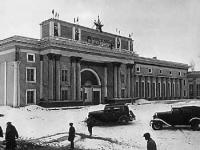
Railway stations of Almaty.
“O trains flying into the night,
Carrying sleep at the station ...
However, I know that even then
You would not have known - if you knew.“
Marina Tsvetaeva. May 17, 1913.
Railway in Almaty.
The railway station Almaty-2 is located at the end of the northern part of Abylai Khan Avenue, 1, to the north of Raimbek Avenue. Built in the period from 1936 to 1939. The authors of the project: architects A. P. Galkin, M. Kudryavtsev; artist I. V. Vakhek.
This is how the architectural features and layout of the Alma-Ata-2 station are described in the book by Mendikulov M. M. “Architecture of the city of Alma-Ata”. Alma-Ata, 1953:
“One of the major structures of the city is the station building at the Alma-Ata II station, which is not yet fully completed; at present, the central part and the right wing are built, consisting of a waiting room and a restaurant with auxiliary premises.
The construction of the left wing is assigned to the second phase. But since the building has a symmetrical composition, it is not difficult to imagine how it will be in its finished form. The main advantage of the architecture of the external design of this building is the clarity of the artistic image, which is revealed by such successfully applied architectural means as the central portal with a large arched opening, the solemn structure of the three-quarter colonnade and high, light-filled waiting rooms for passengers, indicating the public nature of the structure.
Sculptural figures and bas-relief images on modern Soviet themes successfully complement the architectural and artistic image of the structure, so against the background of the portal parapet there are statues of soldiers of the Soviet Army, a collective farmer and a miner, on the frieze, above the arched opening of the portal, bas-reliefs on the themes of agriculture and industry are depicted republics.
The second serious advantage of the building under consideration is the high-quality interior design; the central hall-lobby has a simple and clear square plan, conveniently connected with the spacious passenger waiting room and other auxiliary premises of the station.
The hall is double-height, decorated with a large order of Corinthian columns and a well-drawn caesson ceiling. Order elements have the found proportion. The capitals of the columns are decorated with stylized and interpreted acanthus leaves, which end in elastic volutes at the corners; a five-pointed star is set in the center of the capital.
The capitals are cast from plaster and bronzed. The space of the passenger waiting room is divided by an Ionic colonnade into three well-proportioned naves. The middle nave is arranged more extensive, its ceiling is somewhat raised and has a caisson finish along the edges, and the two side naves are narrow and differ in their modesty of decoration.
Along with the above positive qualities, the building is not without serious shortcomings; First of all, the horizontal elongation of the building and the weak architectural coordination of the central part with the wings are striking.
With a large length of the side wings, it would be necessary to give a high-rise solution to the central part, which, unfortunately, was not done, but on the contrary, it is also solved elongated and therefore cannot dominate the side wings of the building itself and effectively organize the spaces of the Railway Station area.
Trying to mitigate this shortcoming, the author designed a high parapet, which completely crushed the building and did not give the desired result. The three-order processing of the main facade does not have an architectural link between them, and thus the integrity of the compositional structure is violated.
Despite these shortcomings, the building still meets its purpose and is one of the best buildings in Alma-Ata."
It is an example of civil and public architecture (monument of local importance dated January 26, 1984). The average daily attendance is 5,000 people. During summer flights, passenger traffic increases to 10,000 people per day.
Working hours - around the clock. It is located in the center of the city and serves as the main point of departure for passengers to all directions: direct - Moscow, Novosibirsk, Nukus, Yekaterinburg; international - Urumqi; local - Astana, Shymkent, Petropavlovsk, Atyrau, Protection, Zhezkazgan, Mangyshlak, Uralsk.
Initially, during the construction of Turksib, the building was located on the Krasnogvardeisky Trakt (on the site of a furniture factory today). At the suggestion of engineer M. Tynyshpaev, it was moved to Starokladbischenskaya Street (with the loss of the ancient Vernensky cemetery).
Here the forecourt area is formed; a tram was launched, over the years a trolleybus. The square opened the way for a new avenue of the capital of Soviet Kazakhstan (had informational value, Starokladbischenskaya became Vokzalnaya Street.
Then, it acquired a political conjuncture, since 1933 Stalin Avenue, since 1961 - Communist, now Abylai Khan Avenue). Station Square has its own history. Initially, a monument to Abay was laid here (1954). Then, a monument to M.I. Kalinin was erected (1972, demolished in 1992). Now a monument to Abylai Khan was erected in front of the station in 2000, residential and public buildings were erected around the square.
The station and station buildings were built according to the standard project "Kharkovtransproekt" (until 1941 - the beginning of the Patriotic War - the eastern wing was built). One of the early buildings in Almaty with a classical orientation.
The flanks of the building have volumes of projections semicircular in plan with large window planes - a constructive technique in the building. Sculptural compositions, male and female figures, symbolize the successes of the industry, industry, agriculture of the Land of the Soviets. The reliefs of socialist life, decorative elements were made by the Czech sculptor B.Vahek, who was exiled to Alma-Ata during the Stalin years (all the architects, engineers, designers of the station were subsequently repressed and shot).
In 1977, the building was reconstructed according to the Almatygiprogor project, with the construction of the western wing with "... technology violations, changes in the interior and exterior building of the Almaty-2 station" (from a letter from the Minister of Culture in 1993).
Geographical coordinates of railway station Almaty-2: N43°16'25.44" E76°56'20.61"
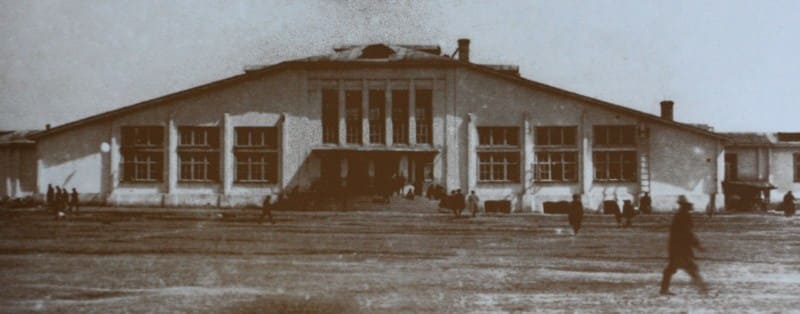
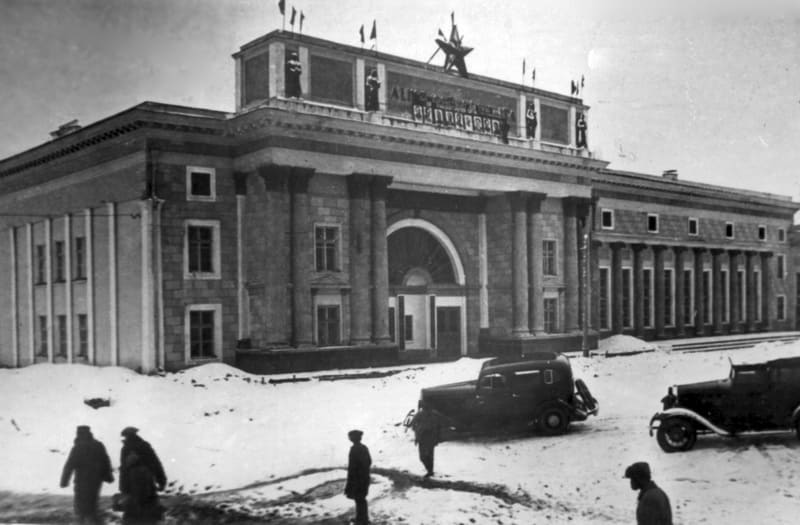
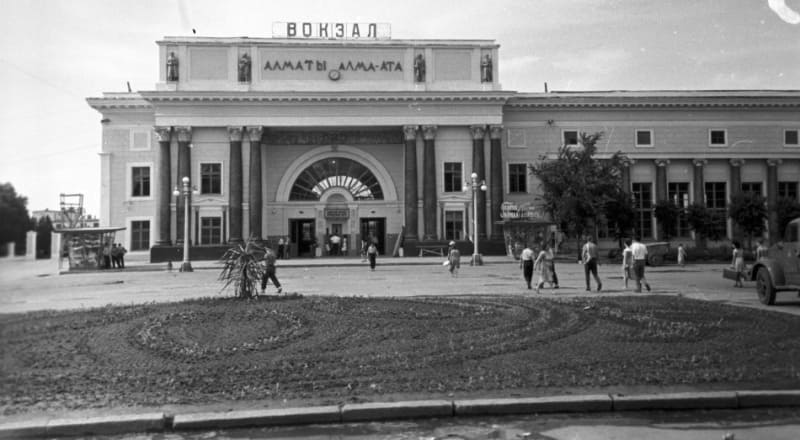

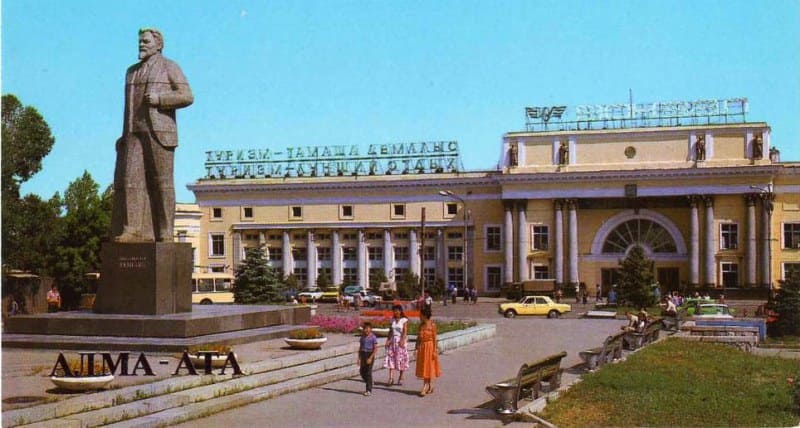
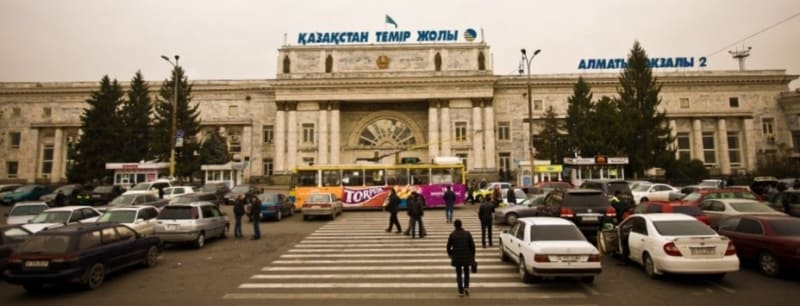
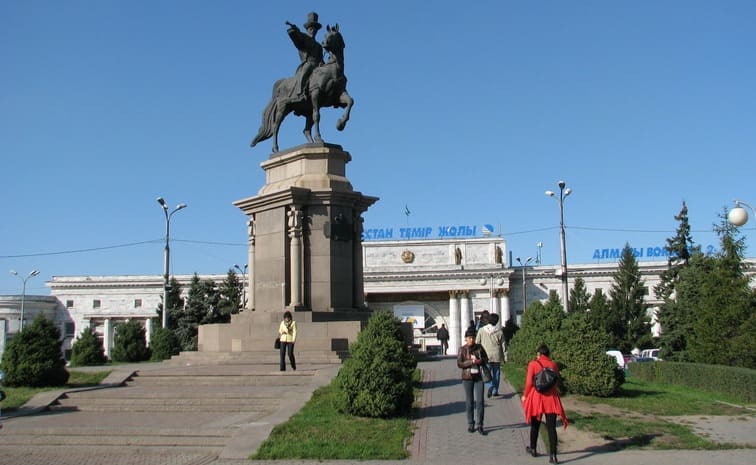
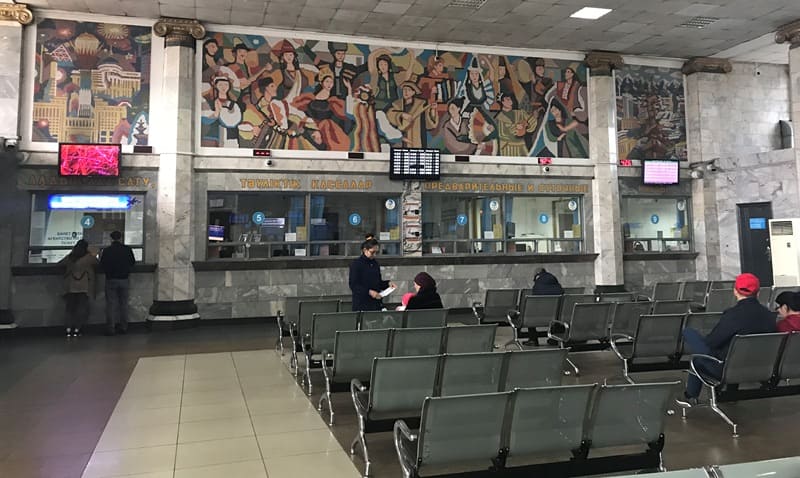
Authority and photos:
Vladimir Proskurin. http://dostoprim.almaty.kz/
M. M. "Architecture of the city of Alma-Ata". Alma-Ata, 1953:
Literature:
Matveeva L. The building of the Academy of Sciences of the Republic of Kazakhstan.- In the book. : Monuments of history and culture of Almaty.
"Catalogue of documents of the Department of archives and documentation and the Central State Archive of Almaty" Almaty, publishing house "Oner", 2003, pp. 81 - 82.
Malinovskaya E.G. Academy of Sciences of Kazakhstan. "Code of monuments of history and culture of the city of Almaty". Almaty, LLP "Kazakh Encyclopedia", 2006, pp. 220 - 222 (appearance illustration).







